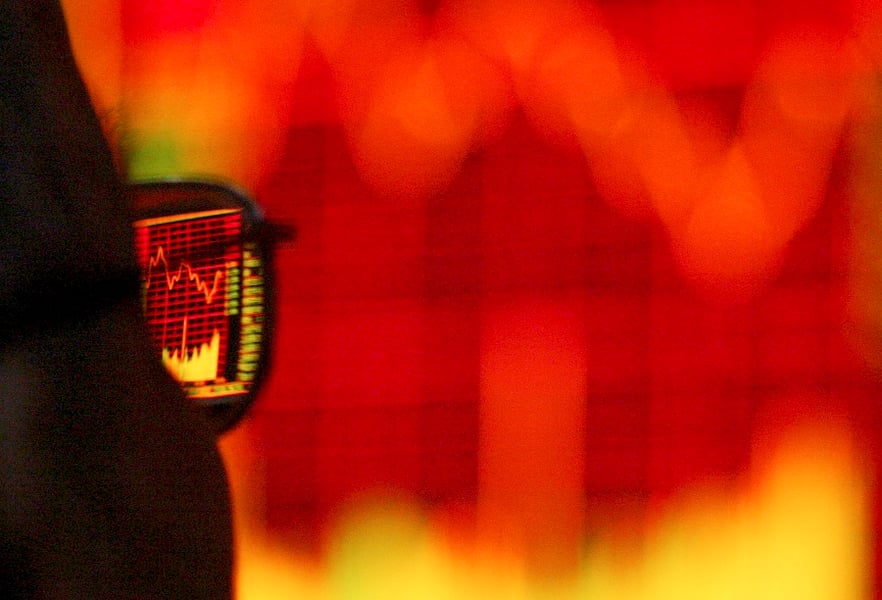China devalued the yuan in a move that rippled through global markets, as policy makers stepped up efforts to support exporters and boost the role of market pricing in Asia's largest economy.
The central bank cut its daily reference rate by 1.9%, triggering the yuan's biggest one-day drop since China ended a dual-currency system in January 1994. The People's Bank of China called the change a one-time adjustment and said its fixing will become more aligned with supply and demand.
The announcement suggests policy makers are now placing a greater emphasis on efforts to combat the deepest economic slowdown since 1990 and reduce the government's grip on the financial system. Authorities had been propping up the yuan to deter capital outflows, protect foreign-currency borrowers and make a case for official reserve status at the International Monetary Fund.
(More: "Advisers calm clients amid China's stock market drop")
“The one-off devaluation of the fix and allowing more market-based determination takes us into a new currency regime,” said Khoon Goh, a Singapore-based strategist at Australia & New Zealand Banking Group Ltd. “It looks like this is the end of the fixing as we know it.”
The yuan dropped 1.8% to close at 6.3231 per dollar in Shanghai. It slid 2.6% to 6.3790 in Hong Kong's offshore trading, the biggest discount to the onshore spot rate since 2011. The central bank allows the Shanghai rate to diverge a maximum 2% from its daily fixing, which was set at 6.2298.
GLOBAL IMPACT
China's devaluation jolted global markets, with the currencies of South Korea, Australia and Singapore falling at least 1% amid bets other countries will seek weaker exchange rates to keep exports competitive. Shares of Chinese airlines sank on concern dollar debt costs will rise, while commodities retreated amid speculation yuan weakness will erode the buying power of Chinese consumers. U.S. Treasuries gained on growing demand for dollar assets.
(More: "Hidden dragons: 10 funds with high China exposure")
Exchange-rate intervention contributed to a $300 billion slide in China's foreign-exchange reserves over the last four quarters. It also made the yuan the best performer in emerging markets, a factor behind last month's 8.3% slide in exports.
The yuan's real effective exchange rate — a measure that's adjusted for inflation and trade with other nations — climbed 13% over the last four quarters and was the highest among 32 major currencies tracked by Bank for International Settlements indexes.
MARKET FORCES
Effective immediately, market-makers who submit prices for the PBOC's reference rate will have to consider the previous day's closing spot rate, foreign-exchange demand and supply, as well as changes in major currency rates, the central bank said in a statement. Previous guidelines made no mention of those criteria.
“The new fixing will be quoted based on the previous day's closing, which is a real market level,” said Becky Liu, a Hong Kong-based senior strategist at Standard Chartered Plc. “The band will become the real band. This is a big step, and bolder than we expected.”
Tuesday's devaluation was a one-off adjustment and shouldn't be interpreted as a sign that the yuan will enter a depreciation trend, PBOC chief economist Ma Jun was cited as saying in a Caixin report. The central bank said it will stabilize market expectations and ensure the new reference-rate mechanism will take effect “in an orderly manner.”
(More: "China in the bull shop")
China has to balance the need to boost exports against the risk of capital outflows, Tom Orlik, chief Asia economist at Bloomberg Intelligence, wrote in a note. He estimates that a 1% depreciation in the real effective exchange rate boosts export growth by 1 percentage point with a lag of three months. At the same time, a 1% drop against the dollar triggers about $40 billion in outflows.
“The risk is that depreciation triggers capital flight, dealing a blow to the stability of China's financial system,” Mr. Orlik said. China's leaders may be calculating that they can manage those risks with their $3.69 trillion of foreign currency reserves, he said.
The PBOC said Tuesday that a strong yuan puts pressure on exports and cited a high effective exchange rate as a factor behind the devaluation. July's export slump was deeper than economists predicted, while the nation's index of producer prices declined 5.4%, the most since 2009.
IMF requirements that reserve currencies must be freely usable also may have played a role in the PBOC's move, according to Commerzbank AG. The fund has said in recent months that the yuan needs to be more flexible.
“The yuan exchange rate will be more market-oriented going forward,” Zhou Hao, an economist at Commerzbank in Singapore, wrote in a report. “Volatility of both the onshore and offshore rates will pick up significantly.”
CURRENCY WAR
China's move has raised the risk of a “currency war” as export rivals seek a weaker exchange rate to stay competitive, according to Stephen Roach, a senior fellow at Yale University and former nonexecutive chairman for Morgan Stanley in Asia.
“It's hard to believe this will be a one-off adjustment,” Mr. Roach said. “In a weak global economy, it will take a lot more than a 1.9% devaluation to jump-start sagging Chinese exports. That raises the distinct possibility of a new and increasingly destabilizing skirmish in the ever-widening global currency war. The race to the bottom just became a good deal more treacherous.”







